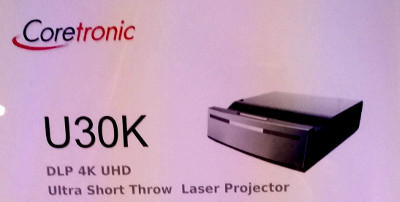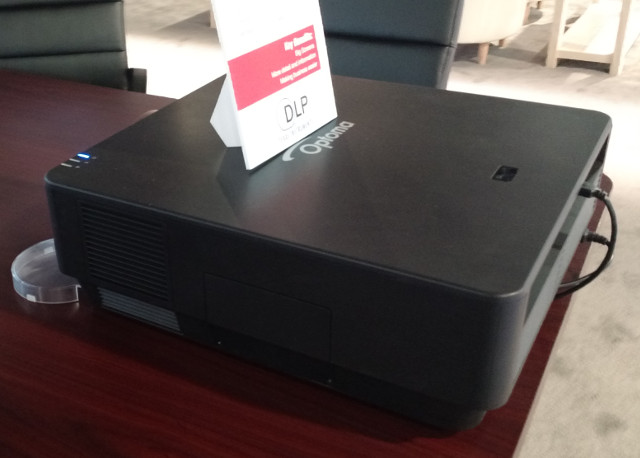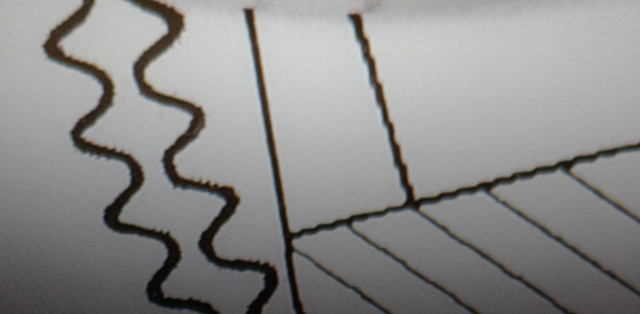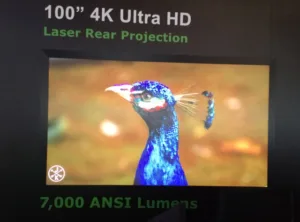TI has a new 0.65” “4K” imager that is composed of 4 million mirrors and an image shifter. This was first shown in public at CEDIA 2015, which we wrote about (TI to Bring 4K DLP to the Masses). At InfoComm, we saw a number of new demonstrations of the chip, which we summarize below.
Coretronic, the OEM manufacturer and owner of the Optoma brand, had a suite at InfoComm where we were able to learn more. The R50K prototype is a 4K laser phosphor projector that is designed to offer 5000 lumens and supports the DCI-P3 color space. The prototype was outputting 4000 lumens but they plan to boost this to 5000 by launch.
It is a central lens design that can support images from 100 to 300 inches and runs an Android O/S. This was being demonstrated next to a laptop that was said to have a wide color gamut (although they could not confirm this gamut) to showcase the color performance of the R50K. The reds did indeed seem to match the laptop. We suspect this design has a yellow phosphor wheel with a red laser to boost that part of the color gamut. It uses a RGBY color wheel.
Also on display was the ultra short throw (“laser TV” class) projector called the U30K. This has the same basic chassis as the R50K but has a rated lumen output of 3300 lumens and a projection screen size range of 100 to 140 inches. It supports the DCI-P3 color space as well and the light source lifetime is rated at 20K hours. Higher lumen versions are planned for later as well.

Optoma was demonstrating their new 4K projector in the TI booth as well as their own booth. In the TI booth, they showed a number of detailed images with fine line structures. The photos below show the reconstruction of these fine lines. As is evident, there are some artifacts that are produced with the image shifting technique that might not be there with a native 4K imager. However, the image shifting techniques will be available at lower price points to fit a market need.


In the Optoma booth, the unnamed 3300 lumen “Laser TV” (based on Coretronic U30K) platform was shown projecting an image on simple white-painted board. This includes support for H.265 decoding and runs on Android 5.0. It offers a very aggressive 0.18 short throw ratio allowing it to produce a 100” image with the front of the projector just two inches from the wall or screen. Availability is expected in Q1’17.
The company also plans to launch a lamp-based front projector with the 4K chip and an LED-based version with the 4K chip. The two are aimed at the home and commercial applications. The LED 4K prototype was shown at CES and we believe the model shown in the TI booth was the lamp-based version. This lamp-based unit will offer 4500 lumens. No pricing has been revealed.
Optoma says they plan to include HDR support (presumably HDR10) in the LED and laser-phosphor models when they launch by the end of the year, but not in the lamp-based version.
Delta/Vivitek was showing a prototype of a 7000 lumen projector using the 4K chip in a rear-projection configuration. The rear configuration was probably done to get better contrast but also because of the prototype nature of the projector – there was no housing for it. As noted in the photo below, it created a 100” image that looked pretty good. – CC

